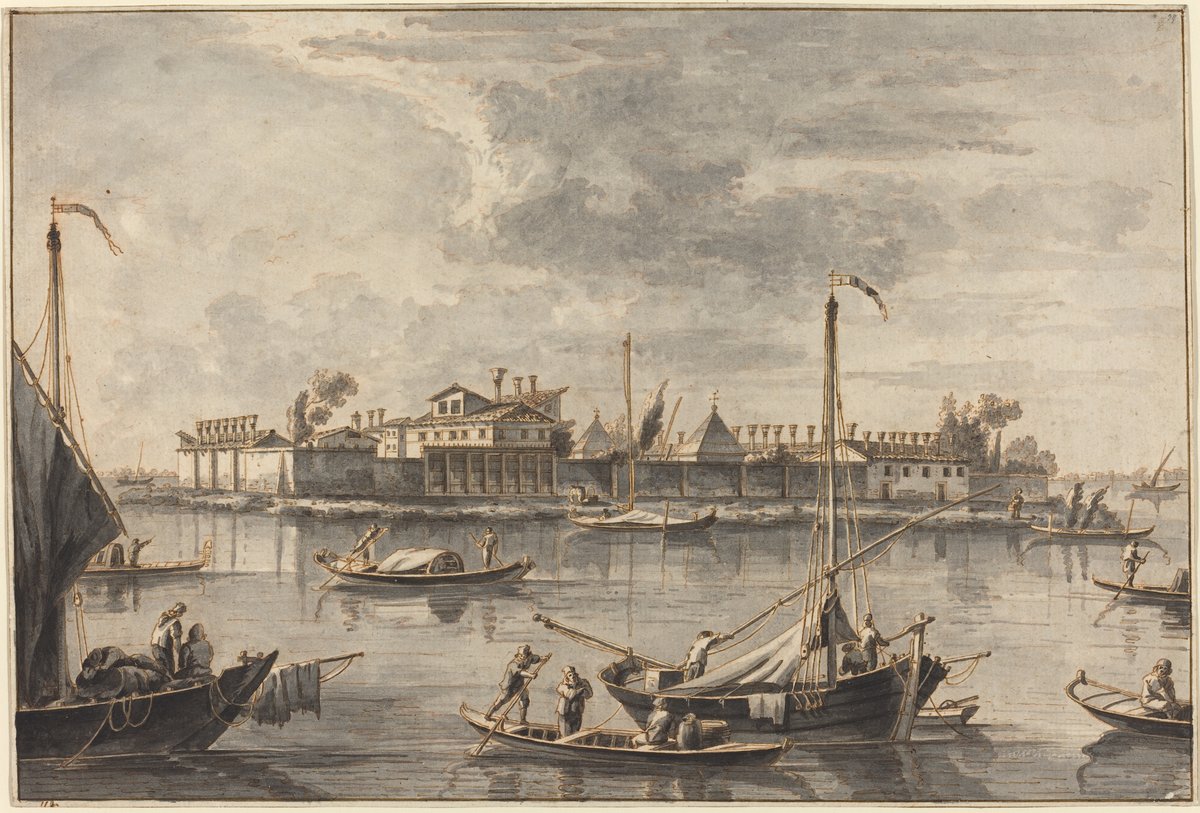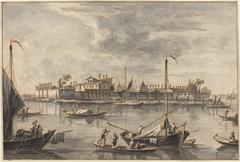
Lazzaretto Nuovo Visiting Hours, Tickets, and Venice Historical Sites Guide
Date: 15/06/2025
Introduction to Lazzaretto Nuovo
Set in the tranquil northern reaches of the Venetian Lagoon, Lazzaretto Nuovo is one of Venice’s most significant and intriguing historical sites. As one of the world’s earliest quarantine stations, established in 1468, the island played a pivotal role in the history of public health, the fight against the Black Plague, and the development of Venice’s maritime power. With its origins dating back to at least 1015 as a monastic vineyard, Lazzaretto Nuovo offers visitors a rare opportunity to step into a living museum—where centuries of religious, agricultural, medical, military, and ecological history converge.
Today, Lazzaretto Nuovo stands as a dynamic ecomuseum and research hub. Visitors can explore the vast Tezon Grande warehouse, archaeological sites with mass graves, evocative historical graffiti, and the “Sentiero delle Barene” saltmarsh trail. This guide provides comprehensive information on visiting hours, ticketing, tours, transportation, accessibility, events, and conservation efforts, making it an essential resource for anyone planning to discover this hidden Venetian gem.
For official visitor details and in-depth historical context, consult the Lazzaretti Veneziani website, History Walks Venice, and Italy Heaven.
Table of Contents
- Introduction
- Early History
- The Black Plague and the Lazzaretti System
- Quarantine Architecture and Procedures
- Impact and Historical Significance
- Decline and Military Use
- Rediscovery and Restoration
- Practical Visitor Information
- Educational and Cultural Activities
- Visual Media and SEO Guidance
- Frequently Asked Questions (FAQ)
- Conclusion and Call to Action
- References
Early History: From Monastery to Outpost
Lazzaretto Nuovo’s story begins over a millennium ago. Documented as “vigna muradlia” in 1015, the island was originally a walled vineyard cultivated by Benedictine monks from San Giorgio Maggiore. These monks established a church dedicated to St. Bartholomew and constructed monastic cells within a fortified enclosure. The island’s economy thrived on salt production, with several salt pans extracting this valuable resource from the lagoon (History Walks Venice).
By the late 18th century, the monastic complex was demolished, setting the stage for Lazzaretto Nuovo’s transformation into a keystone of Venice’s public health strategy.
The Black Plague and the Birth of the Quarantine System
Venice’s status as a trading powerhouse made it especially vulnerable to epidemics like the Black Plague (1347–48). In response, the first dedicated hospital for the sick, Lazzaretto Vecchio, was established in 1423. Recognizing the need to isolate not just the ill but also those exposed and contaminated goods, Lazzaretto Nuovo was founded in 1468 for preventive quarantine.
The lazzaretti system, with Lazzaretto Vecchio for the sick and Lazzaretto Nuovo for the exposed yet healthy, pioneered the concept of systematic isolation for disease control and became a model for Europe (History Walks Venice).
Quarantine Architecture and Procedures
Structure and Facilities
Lazzaretto Nuovo was fortified with high, windowless walls and divided into secure compartments (contumacia). The outer rooms provided beds and fireplaces for wealthier travelers, while sailors and poorer visitors used simpler shelters. The Tezon Grande, a monumental 16th-century warehouse (100 x 15 meters), ventilated by its original open arches, served as a central space for disinfecting and storing goods (History Walks Venice).
Quarantine Process
Upon arrival, ships underwent inspection by plague doctors. The sick were sent to Lazzaretto Vecchio; the rest—crew, passengers, and cargo—remained on Lazzaretto Nuovo for 40 days (the origin of “quarantine”). Goods were fumigated, and individuals were strictly monitored.
Impact and Historical Significance
The dual quarantine system helped Venice withstand repeated plague outbreaks for over three centuries, saving countless lives and sustaining commerce. Its methods, including rigorous inspection and isolation, influenced public health policies throughout Europe (History Walks Venice).
Decline and Military Use
As plague threats waned in the 18th century, Lazzaretto Nuovo’s maintenance became costly. Although considered for demolition, it was instead repurposed by the Austrians as a military depot. The Italian army maintained a presence until 1975, with many original structures modified or lost. Restoration began in the late 20th century, spearheaded by volunteers and heritage organizations.
Rediscovery and Restoration
Since the 1970s, archaeological excavations, restoration of historic graffiti, and the development of educational programs have revived the island. Managed by the EKOS Club and ArcheoClub Italia, Lazzaretto Nuovo is now a vibrant ecomuseum and research center (History Walks Venice).
Practical Visitor Information
Visiting Hours
Lazzaretto Nuovo is open for guided tours from April or March through October or November, primarily on Saturdays at 16:00 and by arrangement on other days. Always check the official website for current schedules and special openings.
Tickets and Booking
Admission is by guided tour only. Booking is mandatory—reservations can be made online, with payment by debit/credit card upon arrival (cash not accepted). Standard rates are €10 for adults and €5 for children up to 14 years. Private and group tours require advance arrangement and a minimum group contribution (Lazzaretti Veneziani).
Transportation
Reach the island via ACTV Line 13 vaporetto from Fondamente Nove, Venice. Lazzaretto Nuovo is a request stop; inform the crew when boarding and activate the signal at the quay for your return (Italy Heaven).
Accessibility
Due to uneven terrain and preserved historic structures, accessibility is limited for those with mobility challenges. Contact the management for detailed accessibility information.
Facilities and On-Site Experience
Facilities are minimal in keeping with the island’s ecomuseum focus. Bring water and snacks; restrooms are available but limited. The guided tour includes the Tezon Grande, archaeological sites, and the “Sentiero delle Barene” nature trail, with interpretive panels (primarily in Italian) and English explanations available on request (The Broke Backpacker).
Environmental and Conservation Considerations
Lazzaretto Nuovo is managed as a sustainable heritage site. Pets are not permitted. Smoking and littering are prohibited. Visitor fees support ongoing conservation, research, and educational programs (Lazzaretti Veneziani).
Travel Tips and Nearby Attractions
- Pair your visit with trips to Sant’Erasmo (Venice’s “vegetable garden”), Vignole, or Murano (glassmaking).
- Wear comfortable footwear and bring binoculars for birdwatching.
- Plan your visit to align with the ferry schedule and tour timing.
Educational and Cultural Activities
Events and Workshops
Lazzaretto Nuovo hosts annual events such as European Archaeology Days and European Heritage Days, thematic conferences, and community gatherings (Lazzaretti Veneziani – Eventi 2025; Allevents.in). Workshops include archaeological digs, conservation projects, graffiti documentation, and environmental education on the saltmarsh trail.
School and University Programs
Educational packages are available for schools and universities, tailored to curricula in history, biology, and archaeology. The island also supports university research, internships, and thesis projects (Lazzaretti Veneziani).
Visual Media and SEO Guidance
Enhance your visit by exploring high-quality images, maps, and virtual tours on the official site. Use alt text optimized with keywords such as “Lazzaretto Nuovo visiting hours,” “Lazzaretto Nuovo tickets,” and “Venice historical sites” for accessibility and search engine visibility.
Frequently Asked Questions (FAQ)
Q: What are the Lazzaretto Nuovo visiting hours?
A: Guided tours run primarily from March/April to October/November, usually on weekends. Exact times are available on the official website.
Q: How do I purchase tickets?
A: Tickets are by online reservation only; pay by debit/credit card at the entrance.
Q: Is Lazzaretto Nuovo accessible to people with disabilities?
A: Some areas are challenging due to uneven ground and historic structures. Contact management before your visit for details.
Q: Are English-language tours available?
A: Yes, especially for groups by prior arrangement. Individual visitors may receive English explanations during standard tours.
Q: Can I bring food or pets?
A: Bring your own water and snacks as there are no cafés or shops; pets are not allowed.
Q: How do I reach the island?
A: Take ACTV Line 13 from Fondamente Nove, Venice, and inform the crew for a stop at Lazzaretto Nuovo.
Conclusion
Lazzaretto Nuovo is a rare Venetian treasure, bridging centuries of history, public health innovation, archaeology, and natural beauty. By planning your visit in advance, securing tickets, and familiarizing yourself with the island’s schedule and requirements, you’ll be rewarded with an immersive journey into Venice’s lesser-known past. The island’s ongoing restoration and commitment to sustainable tourism make it an exemplary destination for both learning and exploration.
Call to Action
Ready to explore Lazzaretto Nuovo? Book your tour today and download the Audiala app for audio guides and the latest updates. Follow us on social media for news on special events, workshops, and new discoveries. Discover more about Venice’s hidden gems in our related articles and start planning your lagoon adventure!
References and Further Reading
- History Walks Venice – Lazzaretto Nuovo: The First Quarantine Station
- Lazzaretti Veneziani – Official Visitor Info
- A Guide in Venice – Quarantine Islands
- Lazzaretti Veneziani – Eventi 2025
- Italy Heaven – Lazzaretto Nuovo
- Europe for Visitors – Venice ACTV Lazzaretto Nuovo
- Unusual Places – Lazzaretto Nuovo
- Love Venice – Lazzaretto Nuovo













































































































